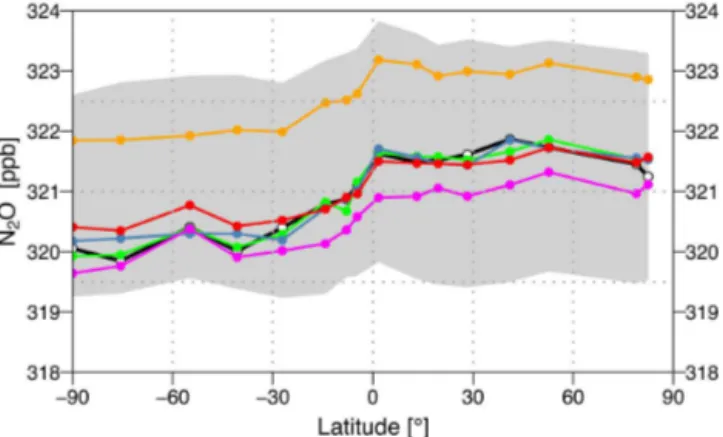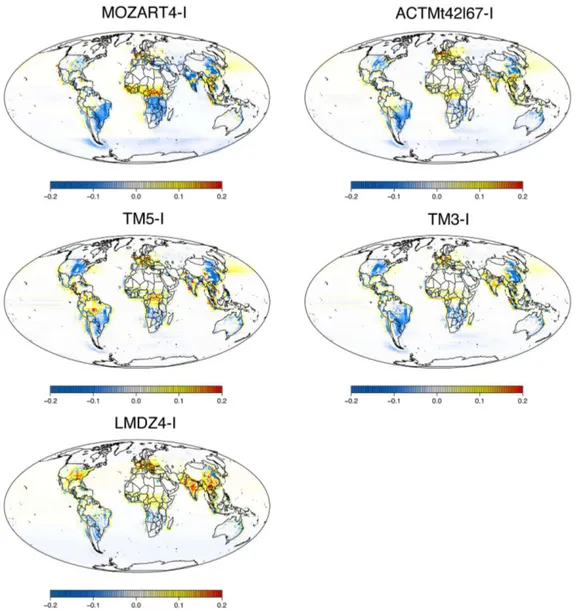TransCom N<sub>2</sub>O model inter-comparison – Part 2: Atmospheric inversion estimates of N<sub>2</sub>O emissions
Texto
Imagem




Documentos relacionados
Seven of the reservoirs (Lake Wohlen, Lake Gruy `ere, Lake Sihl, Lake Luzzone, Lake Santa Maria, Lake Oberaar and Lake Lungern) were sampled several times during the campaign
transport model and a minimum variance Bayesian inverse method was used to estimate annual emission rates using the measurements, with a priori estimates from the Emis- sions
fluxes associated with these upwelling events provide readily interpretable signals of carbon dynamics in the coastal margin (Pennington and Chavez, 2000; Friederich et al., 2002;
Here, we investigate the potential evolution of marine N 2 O emissions in the 21st century in response to anthropogenic climate change using the global ocean biogeochemical
The two main anthropogenic CO 2 fluxes are emissions from the combustion of fossil fuels and net emissions from land use change, the latter being largely driven by deforestation
incubating intact soil cores from four sites (three savanna, one pasture) under controlled soil temperatures (ST) and soil moisture (SM) we investigated the release of the trace
Another impact of non-acyl peroxy nitrates is that they are a possible positive inter- ference to in-situ NO 2 measurements in the upper troposphere because the non-acyl peroxy
When compared to the prior uncertainties, inversions with 70-station networks achieve an uncertainty reduction of 56 % on average and a 16 % 1-sigma posterior uncertainty for





